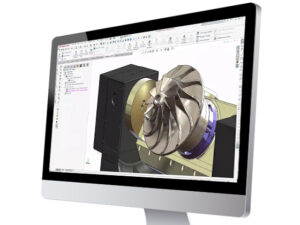In recent years, the world of product development has been revolutionized by the emergence of 3D printing technology. Also known as additive manufacturing, 3D printing has become a game-changer for various industries, enabling the creation of prototypes and functional parts with unmatched precision and speed. In this blog post, we will explore the numerous advantages of 3D printing in the product development industry.

Rapid Prototyping
One of the most significant advantages of 3D printing in product development is its ability to facilitate rapid prototyping. Traditionally, creating prototypes involved lengthy and expensive processes, such as CNC machining or injection molding. With 3D printing, designers and engineers can turn digital designs into physical functional parts quickly and cost-effectively.
This accelerated prototyping allows for faster iterations and enables teams to identify design flaws and make necessary improvements early in the development cycle. By reducing the time and cost associated with prototyping, 3D printing encourages innovation and speeds up product development.
Design Freedom and Complexity
Another remarkable advantage of 3D printing is the unprecedented design freedom it offers. Unlike traditional manufacturing methods, which often have limitations in terms of design complexity, 3D printing allows for the creation of intricate and organic shapes that were previously unattainable.
With the ability to print complex geometries and internal structures, designers can unleash their creativity and explore innovative design possibilities. This freedom enables the development of more functional and ergonomic products, leading to enhanced user experiences and improved product performance.
Cost Efficiency
3D printing technology brings cost efficiency to the product development process. Unlike traditional manufacturing methods that require the creation of molds, dies, or specialized tooling for each iteration, 3D printing eliminates these setup costs. The ability to print-on-demand and avoid minimum order quantities significantly reduces production costs, especially for low-volume or customized products.
Furthermore, with 3D printing, materials can be used more efficiently, resulting in less waste compared to subtractive manufacturing techniques. By reducing material waste and eliminating the need for expensive tooling, 3D printing offers a cost-effective solution for product development, particularly for small and medium-sized enterprises.
Accelerated Time-to-Market
Time-to-market is a critical factor for success in today’s fast-paced business environment. 3D printing technology is pivotal in reducing the product development cycle, enabling companies to bring their innovations to market faster than ever before.
The rapid prototyping capabilities of 3D printing and eliminating tooling and setup times allow for quick iterations and faster design validation. This accelerated development process enables companies to respond swiftly to market demands, reduce product development risks, and gain a competitive edge.
Customization and Personalization
Personalization has become a key trend in the consumer market, and 3D printing technology is perfectly suited to meet this demand. 3D printing makes it possible to create customized and personalized products at scale. Each item can be tailored to meet individual preferences, creating a unique and personalized user experience.
This advantage is particularly significant in healthcare and consumer goods industries, where personalized products and prosthetics are in high demand. 3D printing allows for the production of customized medical implants, dental aligners, eyewear, and other products, enhancing patient outcomes and customer satisfaction.
Supply Chain Flexibility
The traditional manufacturing supply chain often involves complex logistics, long lead times, and the risk of inventory obsolescence. 3D printing technology offers a solution by providing on-demand manufacturing capabilities, reducing reliance on global supply chains, and minimizing inventory requirements.
By implementing 3D printers at strategic locations, companies can achieve greater supply chain flexibility, enabling local production and reducing transportation costs. This decentralized manufacturing approach also enhances sustainability by reducing carbon emissions associated with global shipping.
The advantages of 3D printing technology in the product development industry are undeniable. From rapid prototyping and design freedom to cost efficiency and accelerated time-to-market, 3D printing transforms how products are conceptualized, developed, and manufactured. With its ability to enable customization, enhance supply chain flexibility, and revolutionize traditional manufacturing processes, 3D printing is undoubtedly a game-changer that will continue to shape the future of product development. Embracing this technology will allow businesses to stay ahead of the curve, innovate faster, and deliver superior products to the market.
Contact Us
Interested in delving deeper into metal or composite 3D printing or would like to schedule a visit to see the technology in-person? Get in touch with one of our experts: 800-454-2233.
Share
Meet the Author

